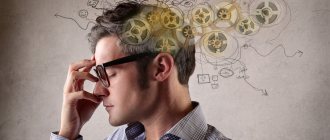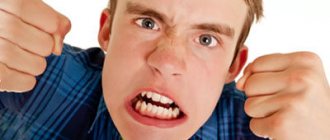Society
07:00, 01/07/2018 8 Scene: Open lecture hall
Professor of Kazan Federal University - on research into self-regulation of mental states
Photo: kpfu.ru
Perhaps, neither a student before an exam, nor an entrepreneur before important negotiations, nor a diplomat would give up the superpower to manage their mental states. Head of the Department of General Psychology, Professor at the Institute of Psychology and Education at KFU, Alexander Prokhorov, told us what factors influence mental states and what is needed to correct a bad mood or even get out of protracted grief. The lecture is retold as part of the Open Lecture Hall project.
Vladimir Bekhterev was also interested in psychological states
In recent years, the relevance of such an area as state psychology has grown enormously. It is explainable.
— A lecturer may feel anxious before a report, a student may be happy that he received a high mark in the exam. “Fear, sleep, falling in love are also states,” Alexander Prokhorov gave examples in anticipation of a lecture he gave to students at KFU.
According to him, a state is a complex mental phenomenon that is located between mental processes and properties (processes can be cognitive, motivational, and properties are the character and abilities of a person). When studying the psychology of states, scientists encountered a problem: the methodology that is suitable for studying processes and properties is not suitable for studying states. What is the method to catch the slightest change in state? After all, it can be either very long or very short.
At Kazan University, this direction is being intensively developed at the Department of General Psychology. The history of the development of state psychology at Kazan University is primarily associated with the works of the outstanding psychiatrist Vladimir Bekhterev. He was the first to organize a psychophysiological laboratory and, in addition to studying neural pathways and brain organization, he studied conditions - including the state of fatigue and concentration.
— During the Soviet period, there was a laboratory of individual differences at Kazan University, headed by Professor Nison Peysakhov. I also worked in this laboratory. We studied the functional states of students, teachers, athletes, and prepared equipment for psychophysiological research. We created a neurochronometer, which won a medal at VDNKh.
Definition of self-regulation
In a broad sense, mental self-regulation is considered as one of the levels of regulation of the activity of living systems, which is characterized by the use of mental means of reflecting and modeling reality.
Thus, mental self-regulation includes control of the behavior or activity of the subject and self-regulation of his current state. There are also narrower interpretations of this phenomenon:
- “Mental self-regulation is the influence of a person on himself with the help of words and corresponding mental images”
- “By mental self-regulation we understand mental self-influence for the purposeful regulation of the comprehensive activities of the body, its processes, reactions and states”
According to V.I. Morosanova, self-regulation is understood as “integrative mental phenomena, processes and states” that ensure “self-organization of various types of mental activity” of a person, “integrity of individuality and the formation of human existence.”
What all definitions have in common is the identification of the human condition as an object of influence and the focus on the use of internal means of regulation, primarily methods of psychological self-influence.
Types of dynamic changes in mental states
Currently, Kazan researchers are working in three areas: the study of states as a mental phenomenon; study of the relationship between mental state and components of consciousness; study of self-regulation of mental states. According to Alexander Prokhorov, the actualization of the state depends on the relationship between the situation and the event in which the subject is located, his subjective-personal qualities and the structure of consciousness. The relationship between the three components in the social and objective environment determines the emergence of a particular state.
- The situation has changed - the state has changed, the personality has grown - the state has changed, the meanings of the situation have changed - the state has changed, the social environment has changed - the state has changed. These four variables influence the occurrence of a mental state,” the scientist notes.
Psychologists distinguish three types of dynamic changes in mental states: dynamics, transition from state to state, depth of the experienced state. For example, fear is a superficial state, and fear is a deep state. Low mood and depression also have different depths of dynamic changes.
Scientists also distinguish three groups of mental states: operational, current and long-term. Operational states are situational, associated with time “here and now.” This is anger, fear, determination. Current states are longer lasting; in them, a set of situations forms an activity. They can last an hour, a day. For example, interest during a lecture can last for an hour, but the learning process will captivate the student for months.
The long-term condition lasts for weeks and years. For example, mental burnout in a profession can result in depression and chronic fatigue. Such conditions are difficult to regulate due to the presence of a personal component.
Three-level functional structure of mental states
Volitional mental self-regulation
Volitional mental self-regulation is a conscious, purposeful influence on one’s mental states in order to put them in order. Volitional regulation of mental states makes it possible to cope with maladaptive emotions, normalize your nervous system, become calmer, stabilize your mood, increase activity, etc.
Volitional mental self-regulation involves the use of the correct relaxation methods, of which there are a huge number. Let's look at the main ones.
The simplest methods of relaxation
These are the methods of self-regulation that are accessible to any person and do not require specific knowledge and techniques. These self-regulation methods include:
- drawing and crafts;
- listening to classical music;
- reading;
- dancing and singing;
- walk outdoors;
- relaxing baths and massages;
- doing things you love;
- pleasant communication with loved ones, etc.
In most cases, it is enough to use these self-regulation methods to relieve tension, but in some cases they do not work.
Then it is necessary to use more complex methods of mental self-regulation, the main of which are:
- neuromuscular (progressive) relaxation;
- ideomotor training;
- autogenic training;
- sensory reproduction of images.
Let us consider all of the above methods of mental self-regulation in more detail.
Neuromuscular (progressive) relaxation
In the 1930s, American neuropsychiatrist Edmund Jacobson discovered that the occurrence of negative emotional states is closely related to increased tension in the main muscle groups of the body.
This discovery led him to the idea that the opposite effect was also possible, i.e. muscle relaxation can relieve emotional arousal and promote mental relaxation. Based on his findings, Jacobson created a series of simple physical exercises called the “progressive neuromuscular relaxation technique.”
The essence of this technique is to consistently tense and relax the main muscle groups for 5 seconds in the following order: muscles of the limbs (legs, arms), torso, shoulders, neck, head, face. This training takes from 18 (with a single exercise) to 40 (with each exercise twice) minutes.
To conduct a session of neuromuscular relaxation, it is recommended to use an audio recording with instructions from a trainer who will tell you what to do: where to concentrate your attention, when to tense your muscles and relax them, etc.
Before a session of progressive neuromuscular relaxation, you need to find a calm and not too consecrated place, remove clothes that are compressing any parts of your body, take a comfortable position and close your eyes (all exercises must be performed with your eyes closed), and then consistently concentrate your attention to tension and relaxation of all muscle groups in your body [A. Kuznetsova, 2007].
After such training, you will not only get rid of emotional stress, but will also be ready for new achievements.
Ideomotor training
The essence of ideomotor training is the formation of a stable connection between an imaginary and real action.
This method is based on the idea that it is enough to just imagine some movement in your imagination to get an effect equal to actually performing this movement.
It is important to note that the main condition for the effectiveness of ideomotor training is the presence of a real motor skill, i.e. If you do not have experience in performing an action in practice, obtaining a result from carrying out this action during the thought process is impossible.
Ideomotor training involves consistently performing exactly the same relaxation actions as neuromuscular relaxation, only not in practice, but in thoughts.
You need to take a comfortable position, close your eyes, begin to monitor your breathing, and then move on to the sequence of tension and relaxation of muscle groups in your body that you are already familiar with, mentally imagining each movement that needs to be performed for this.
Autogenic training
This method of mental self-regulation involves the use of self-hypnosis, which is based on passive self-observation of the flow of internal processes and the presentation of changes in these processes in the right direction - this can be calming, warming, relief, etc.
Autogenic training is carried out using self-orders - verbal (verbal) formulations. The goal of autogenic training is to form stable connections between self-orders and certain internal states. In other words, it is necessary to form a conditioned reflex so that subsequently the self-order leads to the momentary emergence of one or another positive internal sensation.
Traditional autogenic training according to Schultz involves sequentially performing six groups of statements during which you repeat to yourself that you are calm, your legs and arms are heavy and warm, your heart beats calmly and rhythmically, you breathe deeply and evenly, your solar plexus radiates warmth, and your forehead is cool [A. Kuznetsova, 2007].
Each group of phrases must be repeated sequentially several times over several days to achieve the desired result.
Sensory reproduction of images
This method of mental self-regulation is based on the reproduction in one’s mind of images that are associated with rest and tranquility, and then lead to relaxation.
Before conducting a session of sensory image reproduction, as in previous self-regulation techniques, you need to take a comfortable position, close your eyes, and focus on your breathing.
After this, you need to start imagining stories that will promote relaxation. They can be completely different, but a traditional sensory imagery session uses the scenario of a walk through a warm summer forest.
In abbreviated form, the text of such a scenario can be presented as follows:
- You walk through the warm summer forest with leisurely steps, calmly breathe clean air, enjoy the beautiful scenery, listen to the singing of birds, the rustling of leaves.
- Then you come to a forest clearing and decide to rest on the soft grass, leaning against a tree trunk.
- The sun gently warms you, your whole body is filled with their warmth and warms from the tips of your toes to the very top of your head.
- You begin to catch the sun's rays with your palms, while your face is in the shadow, you feel a pleasant breeze.
- You connect with nature and feel absolute calm and deep relaxation.
- You dissolve into the environment and seem to rise into the air.
- After this, you feel that you have regained your strength and have enough energy to return to the waking state in an excellent mood [A. Kuznetsova, 2007].
Also, as a non-specific method of mental self-regulation, you can use meditation, which is a method of calming the mind by concentrating on some object: in traditional practice, this is breathing. You can read more about meditation in our articles “Meditation for Beginners” and “How to learn to meditate: in accessible language about the most important things.”
Using all of the above techniques for self-regulation of mental activity on a regular basis, you will certainly learn to cope with maladaptive negative mental states.
And if you want to take the process of managing them to an even more advanced level, we recommend that you enroll in our online program “Mental Self-Regulation”, where you can become more familiar with the techniques mentioned in this article and learn other effective self-regulation techniques.
We wish you good luck and sincerely believe that you will be able to find ways of mental self-regulation that suit you and learn to cope with even the most serious stress! To better understand your knowledge, take a short test :
We also recommend reading:
- Storytelling
- How to cope with stress
- How to cope with fear: a selection of useful materials
- 8 Express Techniques for Calming Yourself in Stressful Situations
- Emotional Intelligence in Leadership
- Methods of mental self-regulation
- Ways to relieve stress
- Defense mechanisms of the psyche and psychodiagnostics “Life Style Index”
- Stress. What is it and how to remove it
- Anger management: a selection of useful materials
- Post-traumatic stress disorder: briefly about the most important things
Key words:1Psychoregulation
Why does a person need a fortune?
Mental states perform basic functions. Integrative combines processes, properties, behavioral and vegetative characteristics into a single whole. The developmental function is the repetition of states day after day, which leads to the formation of stable qualities.
But there are others. For example, anxiety performs an anticipatory (anticipatory) function.
Mental state also affects cognitive processes.
— We studied how the mental states of seventh-graders affect working memory. It turned out that there are conditions that are background, such as apathy and calmness,” says the scientist. — There are states that trigger RAM. We learned that all our cognitive processes are affected by states. Against their background, a psychological process unfolds. Imagine, if a student studies with interest, how high the result can be. Or imagine a schoolchild who is apathetic. Productivity decreases. As a result, we see that with the same level of teaching, the result is different.
The influence of mental states on the working memory of schoolchildren
Have an image of what you want in your head and move towards it
Semantic structures always influence mental states. Semantic structures are motives, dispositions, semantic constructs, and personal meanings. The influence is mediated by culture, the situation in which a person finds himself, and his way of life. And the influence of states on semantic structures depends on the situation in which the subject finds himself. The influence is stronger if the situation is negative, and weaker if it is positive.
The transition from one state to another is based on a semantic mechanism (see 14.52 min.).
— Theoretically, we can be in the state of one sign for as long as we like. Move from joy to happiness, from happiness to contentment. It turns out that there are operants, that is, words that are end-to-end when transitioning from one state to another. And we can arbitrarily, that is, intentionally, remain in one state or another for as long as we like. As a result, people can chronically remain in one state, for example, in a positive state.
And the mechanism of transition from a positive state to a negative state and vice versa is also interesting; it is connected with antonyms. In addition, in each state there are operants of the opposite. Then the state can change to the opposite for no apparent reason. Experienced psychologists who provide therapy use these mechanisms - often involuntarily - to regulate the condition. Studying them can become the basis for regulation technologies.
Semantic mechanisms of self-regulation of mental states
— The model of self-regulation of states that we have developed represents the relationship between various personality characteristics and the actions of the subject in the social environment. We always have a goal for the desired state. But it is not always possible to achieve it directly, only through a chain of other states. I take some actions and move to a state, it doesn’t suit me, then I take some actions and move to the third state, if it doesn’t suit me, I take actions again to get to the desired state. Thanks to feedback, we can always understand what state we have reached and whether we need to take any action in this regard,” notes Alexander Prokhorov. — These mechanisms involve reflexive processes; we rely on a person’s character traits, his abilities and temperament, which allows us to manage and regulate states. Each person has his own developed mechanisms for transition from one state to another. Our study of state images shows that these images are stable and conservative. Therefore, when moving to a new state, we move on to what we already have in memory. Mastering the methods of self-regulation allows you to achieve the desired state.
The scientist says that as a result of the study, they found that those subjects who were asked to very clearly describe the desired state moved to it very quickly, in contrast to those who only roughly imagined this state.
Model of self-regulation of mental states
Negative emotional states
Every person experiences emotions. They help us navigate the environment: positive emotions allow us to identify useful stimuli, and negative ones help us develop a defensive reaction in response to dangerous, harmful stimuli.
Negative emotional states include fear, sadness, resentment, anger, disgust, anxiety, guilt, etc.
Negative emotional states can be of two types:
- Adaptive when they are moderate, objectively arising, controlled and self-regulating.
- Maladaptive if they are disproportionate to the stimulus, are too intense, arise as a result of biased stressful situations, last too long, and are very difficult or impossible to control.
Thus, negative emotional states in themselves are not pathological. However, if they become maladaptive, this indicates that the body’s natural mental self-regulation is not sufficiently developed.
Generalization helps to get out of the pit of worries
Psychologists divide situations into those that are reversible and those that are not. In a reversible situation, you can return, if you offended a person and feel guilty, you can ask for forgiveness or, conversely, create a situation where they ask you for forgiveness. Regulation of states in the case of irreversible situations is an intellectualized process. The most important regulatory mechanism in such a situation is generalization. The new meanings that are formed allow us to get out of the pit of our psychological state.
- If you know how to generalize, you will get out of an irreversible situation faster. As an example, we studied about 150 people who had experienced grief. Based on their statements, a graph was created (23.13 min). It shows how the situation is experienced. When a person first learns about what happened, he is in a high level of tension for about seven days. “How is it possible, why did this happen to me?!” Then he goes into the abyss of heavy, deep experiences.
This state of low energy level, hopelessness, apathy, depression lasts on average three months. A person comes out of the pit of experiences only when he generalizes and comes to new knowledge. The world already knows everything, but for a person new knowledge becomes a revelation. It is clear that the person before and after the injury are two different people. Afterwards he becomes wiser, more knowledgeable, more understanding.
— Intelligence multiplied by experience is the wisdom of a person. It is important to understand this model. A negative state makes us think, we begin to generalize. That’s why philosophers and psychologists are mostly gloomy, there are no cheerful ones,” Alexander Prokhorov sarcastically said.
Again, how quickly a person passes through this state is related to personality traits and the relationship between emotionality and rationality. The more emotional the person, the longer the process.
Abstracts For You
Introduction Chapter 1. Mental states of a person 1.1. The concept of human mental states 1.2. Classification of mental states Chapter 2. Regulation and self-regulation of mental states 2.1. General principles of regulation of conditions 2.2. Classifications of methods for regulating conditions 2.3. External methods of regulation of mental states 2.4. Self-regulation methods Conclusion References
Introduction
Any person at least once in his life needed to change his physiological or psychological state in the shortest possible time. Someone has learned to do this using various simple means: for example, by indulging in memories of some positive life events, or simply trying to breathe deeper and more slowly. Other people can't find a way to calm down when they're very nervous or feel good when they're very tired.
Such a person’s inability to regulate his mood can negatively affect not only relationships with others, but also the quality of performance of professional duties.
A long stay in the grip of negative emotional states (anxiety, expectations of the unknown, guilt, dissatisfaction, anger, etc.), the inability to reduce the severity of the experience of adverse effects is also fraught with the fact that it has a destructive effect on the body, physical and mental state.
Even in ancient times, a connection was noticed between a person’s emotions and his physical condition. It was believed, for example, that the need to constantly suppress emotions destroys the heart; envy and anger affect the digestive organs; sadness, despondency, melancholy - accelerate aging.
Currently, regarding the problem of mental self-regulation in activity, there are two positions that differ in the object of regulation. On the one hand, there is a search for its solutions in the direction of identifying regulatory components in the structure of activity, on the other hand, various techniques for self-regulation of the state are being developed and used, up to those that sharply reduce the activity of the subject of activity, and one might say, zombify a person (these include some NLP methods, psychopharmacological drugs, autohypnosis, etc.).
Chapter 1. Human mental states
1.1. The concept of human mental states
Mental states represent holistic characteristics of mental activity over a certain period of time. Taking turns, they accompany a person’s life in his relationships with people, society, etc.
In any mental state, three general dimensions can be distinguished: motivational-incentive, emotional-evaluative and activation-energetic (the first dimension is decisive).
Along with the mental states of an individual person, there are also “mass-like” states, i.e. mental states of certain communities of people (micro- and macrogroups, peoples, societies). In the sociological and socio-psychological literature, two types of such conditions are specifically considered - public opinion and public mood.
Human mental states are characterized by integrity, mobility and relative stability, relationship with mental processes and personality traits, individual originality and typicality, extreme diversity, polarity.
The integrity of mental states is manifested in the fact that they characterize all mental activity as a whole in a certain period of time and express the specific relationship of all components of the psyche.
The mobility of mental states lies in their variability, in the presence of stages of progression (beginning, certain dynamics and end).
Mental states are relatively stable, their dynamics are less pronounced than those of mental processes (cognitive, volitional, emotional). At the same time, mental processes, states and personality traits are closely interconnected.
Mental states influence mental processes, being the background of their course. At the same time, they act as “building material” for the formation of personality traits, primarily characterological ones. For example, a state of concentration mobilizes the processes of attention, perception, memory, thinking, will and emotions of a person. In turn, this state, repeated many times, can become a personality quality—concentration.
Mental states are characterized by extreme diversity and polarity. The latter concept means that each mental state of a person corresponds to an opposite state (confidence - uncertainty, activity - passivity, frustration - tolerance, etc.).
1.2. Classification of mental states
Human mental states can be classified on the following basis:
1) depending on the role of the individual and the situation in the occurrence of mental states: personal and situational;
2) depending on the dominant (leading) components (if they clearly appear): intellectual, volitional, emotional, etc.;
3) depending on the degree of depth: states are (more or less) deep or superficial;
4) depending on the time of occurrence: short-term, protracted, long-term, etc.;
5) depending on the impact on the individual: positive and negative, sthenic, increasing vital activity, and asthenic;
6) depending on the degree of awareness: states are more or less conscious;
7) depending on the reasons causing them;
 depending on the degree of adequacy of the objective situation that caused them.
depending on the degree of adequacy of the objective situation that caused them.
We can distinguish typical positive and negative mental states that are characteristic of most people both in everyday life (love, happiness, grief, etc.) and in professional activities associated with extreme (extreme, unusual) conditions. This should include mental states of professional fitness, awareness of the significance of one’s profession, a state of joy from success in work, a state of volitional activity, etc.
The mental state of professional interest is of great importance for the effectiveness of work.
The state of professional interest is characterized by: awareness of the significance of professional activity; the desire to learn more about it and actively act in its field; concentration of attention on a range of objects associated with a given area, and at the same time these objects begin to occupy a dominant position in the mind of a specialist.
The diversity and creative nature of professional activity make it possible for an employee to develop mental states that are close in content and structure to the state of creative inspiration characteristic of scientists, writers, artists, actors, and musicians. It is expressed in creative upsurge, sharpening of perception, increasing the ability to reproduce what was previously captured, increasing the power of imagination, the emergence of a number of combinations of original impressions, etc.
The mental state of readiness for it in general and for its individual elements in particular is important for the effectiveness of professional activity.
Along with positive (asthenic) states, a person may experience negative (asthenic) mental states in the course of his life (activity, communication). For example, indecision as a mental state can arise not only when a person lacks independence and self-confidence, but also due to the novelty, ambiguity, and confusion of a particular life situation in extreme (extreme) conditions. Such conditions lead to a state of mental tension.
We can and should talk about the state of purely operational (operator, “business”) tension, i.e. tension that arises as a result of the complexity of the activity performed (difficulties in sensory discrimination, states of vigilance, complexity of visual-motor coordination, intellectual load, etc.) and emotional tension caused by emotional extreme conditions (working with people, including patients, offenders, etc.).
Chapter 2. Regulation and self-regulation of mental states
2.1. General principles of condition regulation
Due to the fact that a number of conditions lead to disorganization of behavior and activity, it is necessary to regulate these conditions. In the broadest sense, the regulation of conditions can be carried out in two ways: preventing their occurrence and eliminating existing conditions. Each of these paths can be carried out either through influence on the human psyche from the outside (for example, the influence of a psychologist on a patient through the use of psychoregulatory training, the use of color, music, natural landscape), or through self-influence (self-hypnosis, self-persuasion, self-orders). In the second case we are talking about self-regulation.
During the regulation of states, one of three tasks can be solved:
1. maintaining the existing state;
2. transfer to a new state required by the conditions;
3. return to the previous state.
The last two tasks are realized, on the one hand, through additional generation of nervous energy and an increase in the level of activation, on the other hand, through an urgent and effective discharge of excessively large nervous energy through effector channels, i.e. through speech, ideomotor, motor and visceral reactions.
The effectiveness of many techniques for regulating conditions depends on a number of factors: the regularity of their use, the experience of a specialist, the psychological characteristics of the person affected, and finally, on whether the person himself believes in their effectiveness.
Before any regulatory impact, it is important to consider the state of a person or his individual functional system. Otherwise, the impact may lead to the opposite effect.
Successful, and most importantly - adequate, regulation of states (especially functional ones) is facilitated by feedback that reports changes in a person’s physiological and psychological parameters in the process of regulation.
2.2. Classifications of methods for regulating conditions
G. Sh. Gabdreeva divides the methods of regulation into two groups: direct regulation (pharmacological agents, bibliotherapy, music) and indirect influence (occupational therapy, simulation games and suggestion). True, Gabdreeva suggests using simulation games to change a person’s personal qualities, for example, shyness.
L.G. has a different approach to the classification of state management methods. Dikoy and L.P. Grimak: all control influences are differentiated depending on which regulatory and activating systems they are implemented: specific, nonspecific, cognitive-motivational, etc. Thanks to the processes of specific and nonspecific activation, unconscious, involuntary activation occurs, and with the help of volitional regulation processes, conscious regulation of states.
Izard identifies three methods for eliminating an unwanted emotional state:
1) regulation through another emotion;
2) cognitive regulation;
3) motor regulation.
The first method of regulation involves conscious efforts aimed at activating another emotion opposite to the one that the person is experiencing and wants to eliminate. The second method involves using attention and thinking to suppress or gain control over an unwanted emotion. This is a switching of consciousness to events and activities that arouse a person’s interest and positive emotional experiences. The third method involves the use of physical activity as a channel for relieving emotional stress.
In general, all methods of regulation are divided into two groups: external and internal (self-regulation), although this division is purely conditional, since suggestion can be self-hypnosis, and massage can be self-massage, etc.
2.3. External methods of regulation of mental states
There are many effective external methods for regulating conditions: pharmacological, external suggestion, hypnosis, music therapy, color exposure, physical means (massage, hydrotherapy, acupuncture), etc.
Pharmacotherapy is the use of pharmacological agents to influence a person’s condition. This is one of the most ancient and widespread ways of regulating conditions. Even at the Olympic Games in Ancient Greece, athletes tried to improve their performance by using stimulants.
Professional activities also involve the use of stimulant chemicals, the most well-known of which are caffeine and pharmacological preparations containing it. Excitants and stimulants include phenamine, ephedrine, cordiamine, etc., which are similar in their chemical structure to adrenaline.
In the everyday consciousness of people, there is an opinion that alcohol is also a performance stimulant. It is believed that it “enlightens” thoughts and increases a person’s physical capabilities. This opinion was formed because the euphoria that appears when drinking alcohol creates conditions for an inadequate self-assessment of one’s condition and capabilities.
The use of psychotropic drugs, such as aminazine and reserpine, helps relieve depressed mood, fatigue and other unfavorable conditions. In general, it should be borne in mind that even the most “harmless” drugs disrupt the natural course of processes in the body and may have undesirable side effects, which increase with increasing dosage of the drugs, as addiction to them is observed.
The use of psychoregulation allows you to:
• increase mental adaptation to high stress and monotony of work, maintain a high level of motive, promote rapid nervous recovery;
• neutralize the negative consequences of the impact on the psyche of a person who has suffered trauma or failed in achieving a highly significant goal;
• relieve anxiety, mobilize efforts, raise emotional tone, and the mood to carry out the activity program.
External suggestion is the mental influence of one person (suggestor) on another (suggestor), carried out using speech and non-verbal means of communication and characterized by reduced argumentation or its complete absence on the part of the suggestor and low criticality in the perception of the suggested content on the part of the suggestor.
During suggestion, the suggestor believes in the suggestor’s arguments, expressed even without evidence. In this case, he focuses not so much on the content of the suggestion, but on its form and source, i.e., on the suggestor.
According to some data, a good effect on accelerating recovery and reducing emotional excitability is obtained from the influence of external suggestion on a sleeping person. This effect becomes even greater if vibration massage and a sauna are used beforehand.
The word “hypnosis” appeared only in the middle of the 19th century, but evidence of hypnotic states in people appeared at the dawn of human civilization. It was used by ministers of religious cults.
The unusualness of this method of regulating human states is that hypnosis itself is a state.
As noted by L.G. Dikaya and L.P. Grimak, hypnosis is applicable in a number of cases of professional activity in order to reveal a person’s creative abilities and reserve capabilities. With the help of hypnosis, it is possible to simulate states of increased mental readiness for action with their implementation in the post-hypnotic period in operator activity. Techniques for teaching “self-hypnosis” have appeared, used to improve the performance of people in mass professions. Despite the possibility of successfully using hypnosis to optimize functional states, it has, as the above authors note, significant limitations that make its use in production conditions not always advisable.
First, achieving deep hypnotic immersion is not always appropriate in an everyday work situation. Secondly, not all people are hypnotizable. Most resist hypnotic influence. Thirdly, there are few highly qualified specialist hypnotherapists who could work on optimizing the functional state in production.
As for the use of music to regulate emotions, even in Ancient Babylon, priest-musicians knew about the relieving value of mournful songs for grief and performed them during mourning ceremonies. Emotional experience as the main condition for the perception of music was also noted by philosophers and doctors of Ancient Greece (Aristotle, Plato, Hippocrates).
Harmonious music is the best psychotherapist. When a person falls asleep to gentle melodies, he dreams good dreams all night long. This music is soothing and relaxing.
The study of the emotional significance of individual elements of music (rhythm, tonality) has shown their ability to evoke certain emotional states in a person. Minor keys have a “depressive effect”, fast pulsating rhythms and consonances are stimulating and cause negative emotions, “soft” rhythms and consonances are calming.
It should be taken into account that not only the melody is perceived in music, but also its meaning, therefore a completed musical work has a greater emotional impact on a person than a meaningless prelude consisting of scales, chords, etc.
If we talk about the use of color to regulate states, then different colors have different effects on the mental and functional state of a person. Warm colors (red, orange) have an ergotropic effect, increasing the activity of the sympathetic division of the autonomic nervous system and increasing excitation of the central nervous system. Cool colors (blue, cyan) have a trophotropic effect, i.e. they calm, reducing the activity of the sympathetic department and increasing the activity of the parasympathetic department of the autonomic nervous system. In this regard, the respiratory rate, heart rate, and blood pressure decrease.
Catharsis (translated from Greek as purification) is one of the ways to relieve mental stress. Initially, with the light hand of Aristotle, this concept meant emotional shock and the subsequent state of internal purification in the viewer of an ancient tragedy, the hero of which, as a rule, dies. Later (in psychoanalysis), catharsis turned into a special method of therapeutic influence, consisting of a discharge, a “reaction” of the affect that was previously repressed into the subconscious and was the cause of neurosis.
Simulation games include role-playing and business games. By playing out a particular role and business situation, you can reduce a person’s anxiety.
Bibliotherapy (libropsychotherapy) as a means of regulating conditions was proposed by V.M. Bekhterev, and its physiological essence was revealed by K.I. Platonov.. While reading, a person is imperceptibly drawn into the world created by the writer, becomes, as it were, an accomplice in the events described, and empathizes with his favorite characters. At the same time, one’s own unpleasant emotions and thoughts are forced out of consciousness. In production, this method is usually used in the form of listening to excerpts from works of art to neutralize the state of monotony.
Recently, a new direction in managing emotional states has emerged - gelotology (from the Greek gelos - laughter). Laughter has been found to have a variety of positive effects on mental and physiological processes. It suppresses pain because catecholamines and endorphins are released during laughter. The former prevent inflammation, the latter act like morphine. The beneficial effect of laughter on blood composition has been shown. The positive effects of laughter last throughout the day.
Laughter reduces stress and its consequences by reducing the concentration of stress hormones - norepinephrine, cortisol and dopamine.
Physical means of regulating states.
Massage. It is used both as a means of accelerating the recovery of muscle performance after physical activity, and as a way to regulate the mental state.
Along with manual massage, vibration massage is also used, that is, the action of vibration of a certain frequency and amplitude. However, regular use of vibration massage is ineffective, since the body quickly adapts to this effect.
Hydro procedures. The use of a warm shower, bath, relaxation in special pools, a sauna or just a steam bath reduces the excitement of the central nervous system and helps relieve muscle tension. The advantage of hydrotherapy compared to massage is that the body adapts to it slowly, so it can be used effectively for many years.
Methods of nonspecific activation also include such as the impact on the psycho-emotional state of a person of weak electromagnetic and electric fields, aerones that arise in emitters of a certain type.
2.4. Self-regulation methods
Currently, many different methods of self-regulation have been developed:
- self-hypnosis,
- relaxation training,
- autogenic training,
- desensitization,
- reactive relaxation,
- meditation, etc.
A large number of publications are devoted to self-regulation methods. Let us mention only a few authors: X. Kleinsorge, G. Klumbies, G.D. Gorbunov, A.V. Alekseev, X. Lindeman, I.G. Shultz, N. Petrov, V.S. Lobzin and M.M. Reshetnikov, Yu.N. Filimomenko, A.O. Prokhorov, E. Coue, V.L. Marishchuk and V.I. Evdokimov, V.N. Pankratov. A description of all methods of self-regulation would take even more space.
Let us dwell only on the most accessible and widespread methods of self-regulation.
The first system of self-hypnosis techniques was formed a long time ago and went down in history as the system of Indian yogis.
Interest in the possibilities of self-hypnosis in Europe began to increase in the second half of the 19th century. Psychotherapy began to develop rapidly, one of the founders of which is rightfully considered V.M. Bekhterev. Already at the beginning of the 20th century, he introduced elements of self-hypnosis into clinical practice. Later, E. Jacobson proposed a technique for controlling muscle tone to influence the mental state. Finally, in 1932, the German psychotherapist Johann Schultz developed an active method of psychotherapy, widely known as autogenic training.
The word “autogenic” consists of two Greek words: “auto” - oneself, “gene” - generating, producing, i.e. “self-generating” training, or training produced by the person himself. Schultz based his methodology on:
1) the European system of self-hypnosis;
2) the ancient Indian system of yoga;
3) hypnotic state.
Along with autogenic training, another self-regulation system is known - “progressive relaxation” (muscle relaxation). When developing this method, E. Jacobson proceeded from the fact that with many emotions, tension in the skeletal muscles is observed. Based on this, in accordance with the James-Lange theory, to relieve emotional tension (anxiety, fear), he suggests relaxing the muscles. This method also corresponds to recommendations to put a smile on your face in case of negative experiences and to activate your sense of humor. Reassessing the significance of an event, relaxing muscles after a person has laughed it off, and normalizing heart function - these are the components of the positive effect of laughter on a person’s emotional state.
A.V. Alekseev created a new technique called “psychoregulatory training,” which differs from autogenic training in that it does not use the instillation of a “feeling of heaviness” in various parts of the body, and also in that it contains not only a calming, but also an exciting part. The methodology includes some elements from the methods of E. Jacobson and L. Percival. The psychological basis of this method is the dispassionate concentration of attention on the images and sensations associated with the relaxation of skeletal muscles.
Currently, autogenic training and other relaxation methods are combined with the use of biofeedback (BFB). Biofeedback is associated with the use of equipment that informs a person in a form convenient for perception about the psychophysiological processes occurring in him. Biofeedback is a process during which a person learns to exert a certain influence on physiological processes that are not subject to voluntary control, and on reactions that can be regulated, but the process of their regulation is disrupted as a result of emotional stress. With the help of biofeedback, a person is able to change the rhythm of the heartbeat, electrical conductivity of the skin, the diameter of blood vessels and blood pressure, brain wave activity, and muscle tension.
Changing the direction of consciousness. The options for this method of self-regulation are varied.
Disconnection (distraction) consists of the ability to think about anything except emotional circumstances. Switching off requires volitional efforts, with the help of which a person tries to focus attention on the presentation of extraneous objects and situations.
Switching is associated with the focus of consciousness on some interesting activity (reading an exciting book, watching a movie, etc.) or on the business side of the upcoming activity.
The following also help relieve emotional stress:
• obtaining additional information that removes the uncertainty of the situation;
• developing a backup fallback strategy for achieving a goal in case of failure (for example, if I don’t get into this institute, then I’ll go to another);
• postponing the achievement of a goal for a while if it is realized that it is impossible to do this with the available knowledge, means, etc.;
• writing a letter, writing in a diary outlining the situation and the reasons that caused emotional stress.
Meditation. The goal of meditation is to master your own attention and control it in order to be able to concentrate on a chosen subject to prevent mental stress. There are different types of meditation. Tibetan Buddhists use a mantra - quietly repeated words - as an object of concentration, and Zen Buddhists use counting inhalations and exhalations from one to ten with repetitions. Regardless of the type of meditation, the same techniques are used: “opening consciousness” or focusing attention. Meditation allows you to control your heart rate, reduce the electrical activity of your skin, and increase alpha activity in your brain. Meditation lowers blood pressure and cortisol levels, eliminates pain, and improves sleep. People who use meditation cope better with mental stress. They have lower personal and situational anxiety, fears and phobias.
One of the means of regulating conditions is occupational therapy, i.e. performing any activity. Activities distract a person from unnecessary, obsessive thoughts and experiences, and prevent him from getting hung up on them.
Conclusion
Our time is special. Nowadays, the psyche and brain cells are constantly affected by streams of the most diverse, sometimes unnecessary, and sometimes harmful information - this is on the one hand, and on the other hand, there are not enough hours in the day to truly understand everything that bursts into us into the brain through the channels of the sensory organs. In everything that we see, hear, touch, smell, feel, experience, and cannot help but think about. Our time and our whole life are characterized by instability and uncertainty about the future. That is why many are in a state of almost continuous and very peculiar psychophysical tension. For which, in the end, you have to pay. First of all, health.
Extensive statistics inexorably state a rather sad situation - about half of all deaths in economically developed countries are caused by diseases of the heart and blood vessels. These diseases develop not at all in connection with physical overload, but mainly from chronic neuropsychic overstrain. It primarily affects the cardiovascular system, which reacts very sharply to everything that happens in the world of our thoughts and feelings. And when we are dissatisfied with something for a long time, are afraid of something, suffer or are influenced by other negative, harmful emotions, all this, like insidious arrows, digs into our heart and wounds it. Every person must learn to manage themselves, their mental and physical state. Only under this condition can you withstand stressful situations. In other words, everyone needs to master the capabilities that are inherent in mental regulation and self-regulation.
Bibliography
- Maklakov A.G. General psychology: Textbook for universities. – St. Petersburg: Peter, 2007.
- General psychology: Textbook / ed. R.H. Tugushev and E.I. Garbera. – M.: Eksmo, 2006.
- Psychology: Textbook for students of secondary pedagogical educational institutions / ed. I.V. Dubrovina. – 2nd ed. – M.: Academy, 2002.
- Rozin, V.M. Psychology: Science and Practice: Textbook. – M.: RSUH, Omega-L, 2005.
- Stolyarenko, L.D. Psychology: Textbook for universities. – St. Petersburg: Leader, 2004.
- Tikhomirov, O.K. Psychology: Textbook / ed. O.V. Gordeeva. – M.: Higher Education, 2006.
Was it useful to you? Tell your friends!
I like











